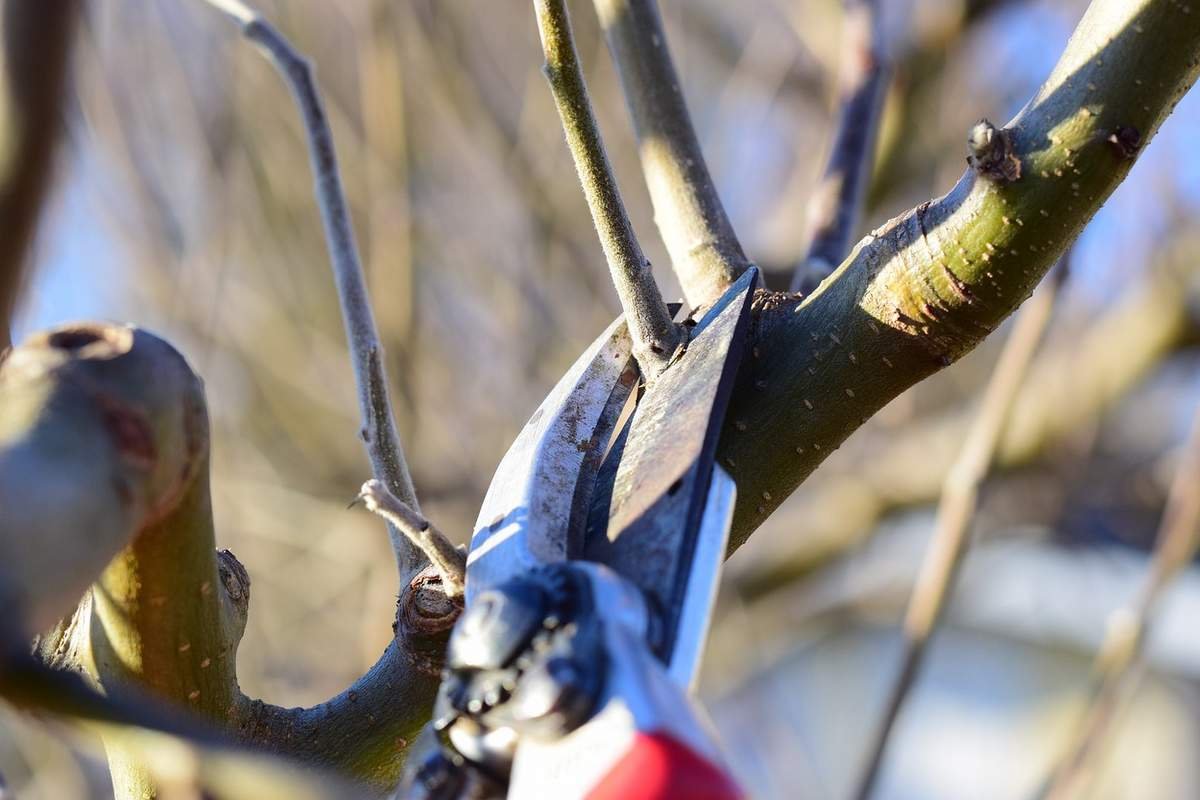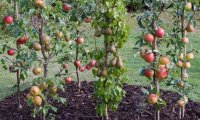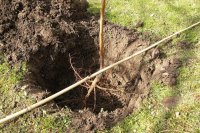
Pruning Grape Vines in Two Easy Steps

Pruning grapes is not complicated. You just need to understand a few basic principles:
Whether you grow wine grapes or table varieties, you've probably already encountered the question of how to prune grapes properly to keep the vines healthy and productive each season. Pruning grape vines affects how much energy the plant puts into growth and how much energy it puts into yield. Of course, it also affects the strength and health of the plant.
You can find several methods of grape vine pruning in the literature, such as cordon pruning, cane pruning, head pruning and other forms of vine cultivation, but all types of pruning and cultivation forms are based on the same rules. Once you understand these basic principles, your annual grape pruning will be a simple routine. The form of grape vine cultivation you choose will depend on the type of support you have available and, in the case of more advanced growers, the specific goals you expect from the grape.
When to prune grape vines
The ideal time to prune grapes is at the end of winter, when the plants are still dormant but the threat of severe frosts (below 15°F ( -10 °C)) has passed. This means the right time for pruning grape vines falls between January and March, depending on the climate zone and temperature conditions of current season. Trimming grape vines too early means that heavy frosts could damage the newly-cut ends of the vines and, conversely, if trimming to late means that plant sap could ooze out of the cuts, putting extra strain on the plant. In any case, avoid pruning any parts of the vine that are already green, as this weakens the plant.
Pruning in summer should be limited to removing unwanted shoots from the trunk, removing leaves from around the grapes to improve air circulation or trimming unnecessarily tall runners as soon as possible after they are discovered.
The essence of grape vine pruning
The grape vine bears fruit on one-year-old wood. What is one-year-old wood? In spring, young shoots start to emerge from the buds. These shoots mature and grow to their final length by autumn, gradually changing color from green to brown. At the end of the growing season, these canes are considered to be one-year-old wood. The following spring, some of the buds on the one-year-old canes will form new canes, which will then produce flowers and fruit. Buds on biennial and older wood usually produce only leaves and other non-productive shoots.
The essence of vine pruning is therefore the annual removal of old wood and the reduction of the fruiting canes so that the plant produces a good quality crop and remains healthy.
Step 1: Clean up
If we let a grape vine grow without pruning, it will put most of its energy into growing old wood, which means that the fruit-bearing one-year-old wood ends up comprising only a very small part of the plant. The first step in any method of grape vine pruning is therefore to remove the two-year-old wood (last year’s spurs) that produced last year's crop, leaving the old wood only on the trunk or on the cordons (the lateral arms of the trunk). To do this, cut off old canes (wood) completely, as close to the branch/trunk as possible. Two-year-old and older wood can be recognized by its thickness and darker color. Remove any damaged, dry and diseased parts of the vine as well as any shoots from the trunk.
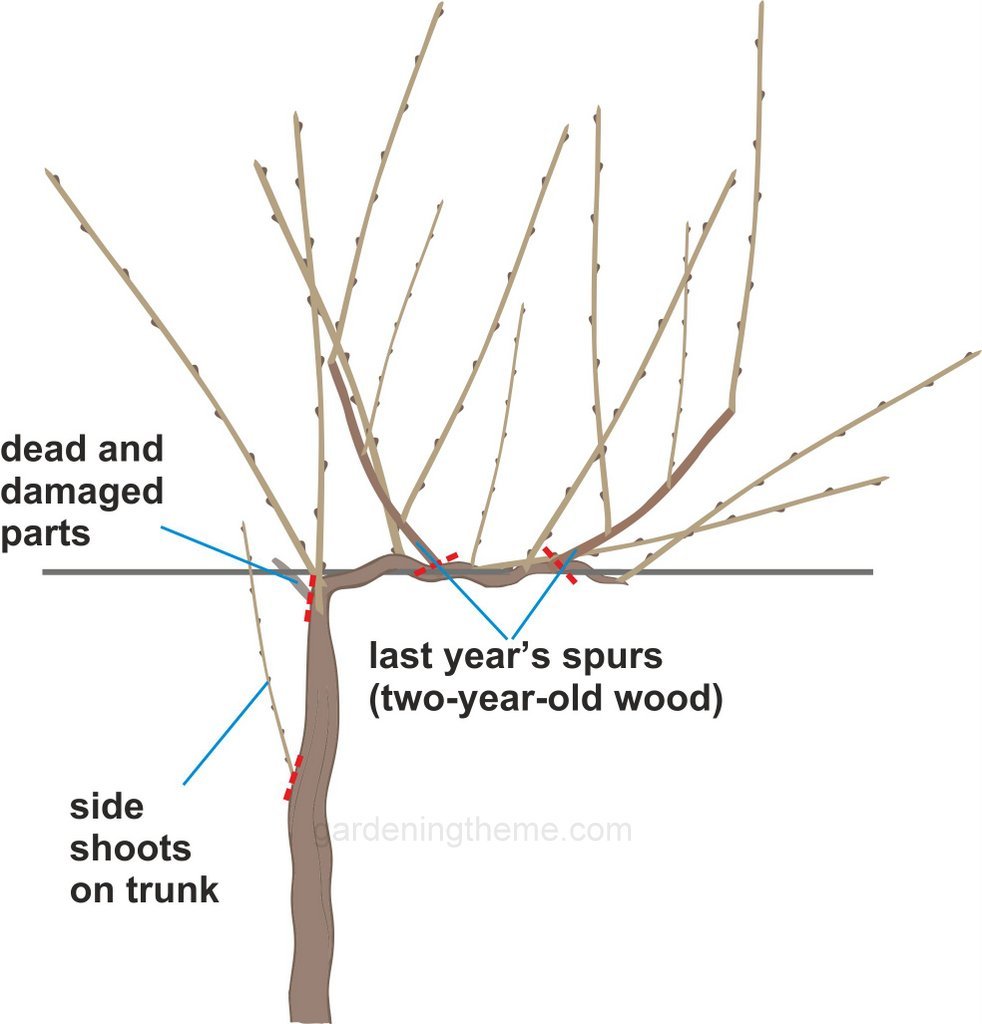
Step 2: Reduction of one-year-old wood
The main task of each grape vine pruning is to reduce the quantity of one-year-old wood so the plant produces the optimum number of bunches of grapes. Allowing too many bunches means they won't have the energy and nutrients to ripen properly, and too few bunches results in poor utilization of the plant. Therefore, it's important to remove some canes, leaving only healthy one-year-old canes on the grape vine, spacing them as far apart as possible and shortening them to 6 to 10 buds. These canes (also known as spurs) will provide the harvest during the upcoming season. Spurs should also be cleaned of the old tendrils that have attached to the wiring. The ideal number of spurs and buds on the grape vine depends on the strength of the plant: an older, more vigorous grape vine with a well-developed root system can handle a larger quantity of fruit-bearing wood and crop.

In addition to the main spurs, you can also leave several renewal spurs (back-up shoots) on the plant to ensure the growth of new spurs for the next growing season. These spurs also provide a backup in case a part of the grape vine is damaged or diseased. If such a situation should arise, the grape vine can continue to grow through the renewal spur. Renewal spurs should be cut down to only one or two buds, as their role is not to produce a crop but to provide a backup plan for the vine's growth. Always cut the canes at least one inch (2.5 cm) above the bud, and always cut diagonally so that rainwater can run off the cut to the side where the bud is not located, so that the sap does not suffuse the bud.
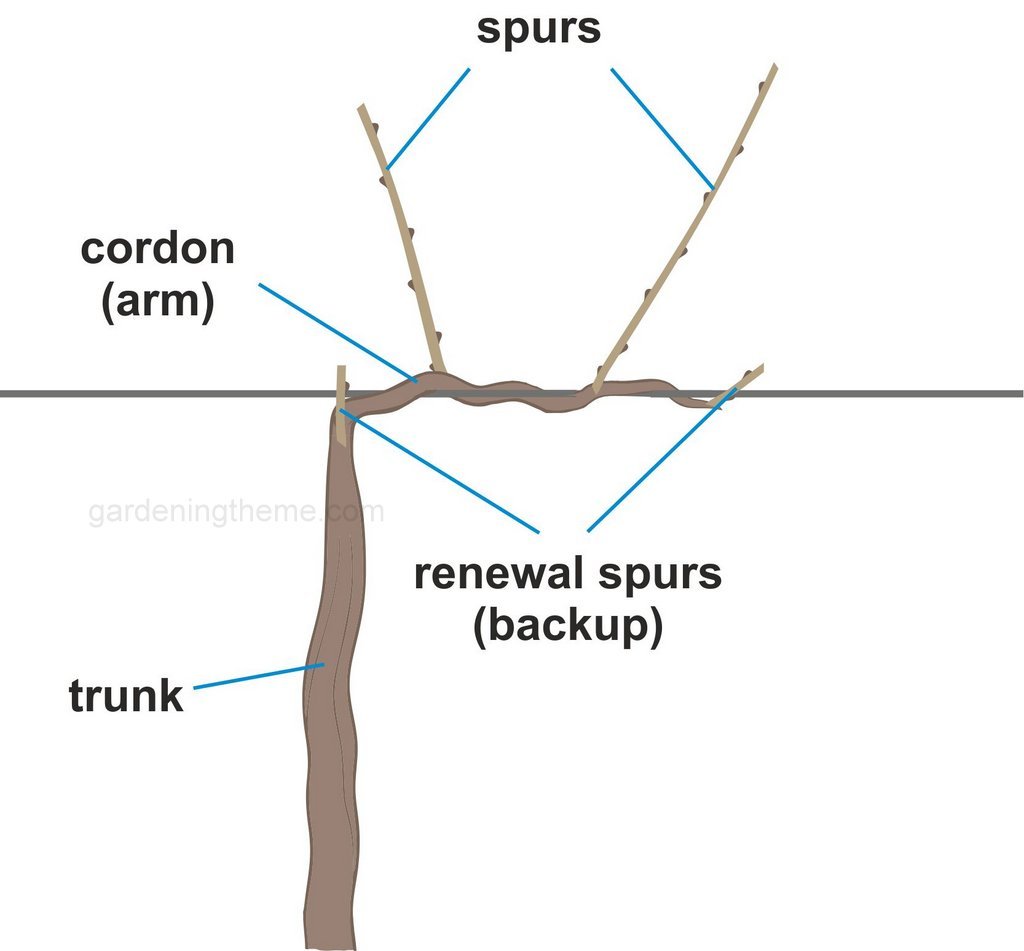
Overall, expect to remove a total of 70 to 90% of the previous year's growth in both pruning steps each year. This will ensure adequate air circulation and prevent fungal diseases on the grape vines.
The buds that you leave on the spurs and on the renewal spurs represent the load on the grape vine for the upcoming season. This load should be optimized for the specific plant. It is recommended to leave between 3 and 9 buds per square yard (0.8 square meter) of green area on the plant. The older and stronger grape vines get, the more we can add to the load (number of buds). Grape vine varieties with larger bunches of grapes require a lower load.
The vine pruning and training methods
Another purpose of grape pruning is to shape the growth of the plant so that it adapts to its support (post, wire, pergola, etc.). This is important for space limitations and to make tending and harvesting comfortable for growers. There are several methods of grape vine training to choose from, but the basic principles of pruning described above apply to all of them, with minor variations.
1. Cordon pruning (spur pruning)
Cordon pruning is a frequently used grape vine cultivation method often preferred by both small and professional growers. Also known as spur pruning, this method has several advantages. Vines are sufficiently far apart, which promotes better air circulation, reduces the risk of fungal diseases and the vines are trained at heights that make the plants easier to work with. We have already described this pruning method above, but cordon pruning can have several variations. Plants can have one or two cordons (arms), and older, stronger plants can have even more, on several levels (see the picture below for the variations of cordon pruning). The arms can be trained at different heights, they can have different lengths, and the fruiting one-year-old canes (spurs) can have different lengths as well—it all depends on the age, strength and health of the vine. The length of the cordons is variable and can be extended for growing on a pergola or other types of support construction.
.jpg)
In cordon pruning, it's important to leave one or more renewal spurs at the top of the trunk as a backup (in case of cordon damage/disease), as well as one renewal spur at the end of each cordon, to ensure that nutrients circulate to the end of the cordon, which will extend its lifespan.
The disadvantages of this method of grape vine training are the longer time, at least two years, needed to establish the trunk and cordons, so your first harvest will be three years following planting, and the plant will have a greater susceptibility to frost damage.
2. Cane pruning
Cane pruning is a widespread form of grape vine cultivation in vineyards but it is also popular among small growers. It does not require a lot of space, so individual plants can be closer together. The vine is maintained at about 3 feet (1m) tall and ends at the top with a ”head” from which spurs emerge. Pruning grape vines with this method still follows the principles that we have already introduced above.

You can leave one or two spurs on the plant, which are then bent and tied to the support wire (bend the spurs only after the plant sap has started to flow into them, so that the canes do not break). This will ensure that the energy and nutrients are distributed evenly over the spurs (otherwise the plant's resources would be directed mainly to the end of the canes). In addition to the main spurs, we can also leave short backup (renewal) spurs on the head of the grape vine, which will grow into new fruit bearing spurs in the next growing season.
3. Head pruning
Head pruning is similar to cane pruning, but here the plant has almost no trunk, and the head from which the spurs grow is only just above the soil level. The advantage of this grape vine training method is that no guide wires are needed. A tall support stake is sufficient, and growing shoots are tied to it gradually during the season. The other advantages of head pruning are the lower space requirements (the grape vines can be planted with smaller spacings) and the high resistance to severe frost. When pruning the vines, we only leave 3 - 6 short spurs (with 2 - 3 buds on each spur), whose role is to bear fruit.

In addition to these well-known grape vine training methods, there are many other forms, such as columnar pruning (vertigo), goblet pruning and many variations of cordon and cane pruning. However, the principles of grape vine pruning that we have described above are universal and apply to all forms of grape vine cultivation. Choosing a method for growing grape vines is simply a question of the spatial and climatic conditions, as well as the practical and aesthetic preferences of each grower.
Grape vine pruning tips:
• Sharp pruning shears ensure clean, smooth cuts, so sharpen them before grape vine trimming each year.
• Immediately remove disease- or pest-infested wood from the vicinity of the grape vine plant and burn it. Disinfect the pruning shears used to cut diseased wood with alcohol to prevent the disease from spreading to healthy plants.
• If grape vines are pruned too much, their yield will be reduced and the bush will become thicker and stronger. If, on the other hand, pruning is insufficient, the vine will yield more, but it will also become weaker. It is therefore important to maintain a balance between yield and vine growth.
• The grape vine needs support in order to grow upright. Keep this in mind when planting the vines and place the proper support (wire, stake, trellis, pergola and other types of support) above the vines so that you can attach new shoots to it.


 Author
Author


